Long Ago and Far Away Greece
Oct 30, 2022 16:11:03 #
HamBar06
Loc: Philadelphia, PA
These are from the archives. Some of the slides were out of my control for more than 5 years and some have deteriorated more than others; probably due to storage failures and/or the various brands of film used. In spite of flaws, I thought you may be interested in seeing the locations.
Greece is a country steeped with ancient history and civilizations. As far back as 3000 BC the Cycladic civilization inhabited the area of Greece. The city states of Ancient Greece such as Athens and Sparta created one of the most advanced ancient civilizations in history, giving birth to many advanced concepts in government that are still used today. In 332 BC, Alexander the Great came into power. By 30 BC, all of Greece became part of the Roman Empire and then the Byzantium Empire until the arrival of the Ottoman Empire in the 1400s.
In World War II Greece was invaded by Italy and taken over by Germany. Greece is now a member of the European Union.
Athens is one of the oldest named cities in the world, having been continuously inhabited for perhaps 5,000 years. Situated in southern Europe, Athens became the leading city of Ancient Greece in the first millennium BC, and its cultural achievements during the 5th century BC laid the foundations of Western civilization.During the early Middle Ages, the city experienced a decline, then recovered under the later Byzantine Empire and was relatively prosperous during the period of the Crusades (12th and 13th centuries), benefiting from Italian trade. Following a period of sharp decline under the rule of the Ottoman Empire, Athens re-emerged in the 19th century as the capital of the independent and self-governing Greek state.
Acropolis The Acropolis is located on a flattish-topped rock that rises 490 ft above sea level in the city of Athens, with a surface area of about 7.4 acres.
In the mid-fifth century BC, the Acropolis became the seat of the Athenian League and Athens was the greatest cultural center of its time, Pericles initiated an ambitious building project which lasted the entire second half of the fifth century BC. Athenians and foreigners alike worked on this project, receiving a salary of one drachma a day. The most important buildings visible on the Acropolis today - that is, the Parthenon, the Propylaea, the Erectheion and the Temple of Athena Nike, were erected during 468 BC. Most of the major temples, including the Parthenon, were rebuilt by order of Pericles during the so-called Golden Age of Athens (460–430 BC). Phidias, an Athenian sculptor, and Ictinus and Callicrates, two famous architects, were responsible for the reconstruction.
DELPHI: previously called Pytho was a sacred precinct and served as the seat of Pythia, the major oracle, who was consulted about important decisions throughout the ancient classical world. The ancient Greeks considered the centre of the world to be in Delphi, according to the Suda, Delphi took its name from the Delphyne, the she-serpent who lived there and was killed by the god Apollo. The precinct occupies a delineated region on the south-western slope of Mount Parnassus. It is now an extensive archaeological site, and since 1938 a part of Parnassos National Park.
The Temple of Apollo at Delphi is part of the Panhellenic Sanctuary at Delphi and occupies a remote, but central location relative to Greek settlements. The temple's heightened position upon the mountain signifies both the prominence of Apollo and the sanctuary itself. Far from the influence of particular cities, but still central, the location of the sanctuary reinforces its Panhellenic nature and contributes to the idea that Apollo could be trusted as a neutral authority. Given its central location and difficult accessibility, the Temple of Apollo at Delphi was no ordinary site, but a place close to the gods.
The Oracle was located on a plateau along the slope of Mount Parnassus, in the Sanctuary of Apollo. Apollo spoke through his Oracle of Delphi, who was a priestess in an inner sanctum, where she sat on a tripod seat over an opening chasm in the earth. Seated over a crack in the ground, she would become intoxicated by the vapors, and she would fall into a trance, allowing Apollo to possess her spirit. In this trance maintained state the Pythia “raved,” and the priests of the temple interpreted her ravings into elegant verse. The translations often had ambiguity integrated into the answer.
The Statue of Antinous at Delphi was discovered in 1894 during excavations in Delphi. Antinous was a young Greek of extraordinary beauty from Bithynia, who became the beloved companion and lover of the Roman emperor Hadrian, but later died in the Nile under mysterious circumstances. Stricken by the death of Antinous, Hadrian, who was an admirer and a passionate devotee of classical Greek Antiquity gave orders that statues of the beautiful young man, whom he had loved so passionately, should be erected in all sanctuaries and cities of his vast empire. Furthermore he decreed the institution and establishment of Games in honor of Antinous, who thereafter was honoured and worshipped as a god. Thus a statue of Antinous was erected within the sanctuary of Delphi, after his death, in A.D. 130, and it was one of the most beautiful. 1964The statue was discovered upright on its pedestal, next to the wall alongside the holy Temple.
Meteora, meaning ‘middle of the sky' , is a unique phenomenon and without doubt one of the greatest sights in Greece. A drive through the region of Thessaly and a visit to Meteora – the monastic mountains – will leave you in awe.These ancient Greek Orthodox monasteries sit on top of sandstone towers, carved out by natural elements. Molded by wind and rain and by earthquakes ; really remarkable. Originally there were 24 religious centers built, of which six remain active.Access to these incredible buildings was once by a network of drawbridges, stairways and a system of ropes and pulleys to winch the monks up and down in baskets, so they were literally ‘suspended in the air'.
The Corinth Canal connects the Gulf of Corinth in the Ionian Sea with the Saronic Gulf in the Aegean Sea. It cuts through the narrow Isthmus of Corinth and separates the Peloponnese from the Greek mainland, making the peninsula an island. The canal was dug through the Isthmus at sea level and has no locks. It is 6.4 kilometres (4 miles) in length and only 24.6 metres (80.7 feet) wide at sea level, making it impassable for many modern ships. It was completed in 1893, but, due to the canal's narrowness, navigational problems, and periodic closures to repair landslides from its steep walls, it failed to attract the level of traffic expected by its operators. It is currently of little economic importance and is mainly a tourist attraction.
Greece is a country steeped with ancient history and civilizations. As far back as 3000 BC the Cycladic civilization inhabited the area of Greece. The city states of Ancient Greece such as Athens and Sparta created one of the most advanced ancient civilizations in history, giving birth to many advanced concepts in government that are still used today. In 332 BC, Alexander the Great came into power. By 30 BC, all of Greece became part of the Roman Empire and then the Byzantium Empire until the arrival of the Ottoman Empire in the 1400s.
In World War II Greece was invaded by Italy and taken over by Germany. Greece is now a member of the European Union.
Athens is one of the oldest named cities in the world, having been continuously inhabited for perhaps 5,000 years. Situated in southern Europe, Athens became the leading city of Ancient Greece in the first millennium BC, and its cultural achievements during the 5th century BC laid the foundations of Western civilization.During the early Middle Ages, the city experienced a decline, then recovered under the later Byzantine Empire and was relatively prosperous during the period of the Crusades (12th and 13th centuries), benefiting from Italian trade. Following a period of sharp decline under the rule of the Ottoman Empire, Athens re-emerged in the 19th century as the capital of the independent and self-governing Greek state.
Acropolis The Acropolis is located on a flattish-topped rock that rises 490 ft above sea level in the city of Athens, with a surface area of about 7.4 acres.
In the mid-fifth century BC, the Acropolis became the seat of the Athenian League and Athens was the greatest cultural center of its time, Pericles initiated an ambitious building project which lasted the entire second half of the fifth century BC. Athenians and foreigners alike worked on this project, receiving a salary of one drachma a day. The most important buildings visible on the Acropolis today - that is, the Parthenon, the Propylaea, the Erectheion and the Temple of Athena Nike, were erected during 468 BC. Most of the major temples, including the Parthenon, were rebuilt by order of Pericles during the so-called Golden Age of Athens (460–430 BC). Phidias, an Athenian sculptor, and Ictinus and Callicrates, two famous architects, were responsible for the reconstruction.
DELPHI: previously called Pytho was a sacred precinct and served as the seat of Pythia, the major oracle, who was consulted about important decisions throughout the ancient classical world. The ancient Greeks considered the centre of the world to be in Delphi, according to the Suda, Delphi took its name from the Delphyne, the she-serpent who lived there and was killed by the god Apollo. The precinct occupies a delineated region on the south-western slope of Mount Parnassus. It is now an extensive archaeological site, and since 1938 a part of Parnassos National Park.
The Temple of Apollo at Delphi is part of the Panhellenic Sanctuary at Delphi and occupies a remote, but central location relative to Greek settlements. The temple's heightened position upon the mountain signifies both the prominence of Apollo and the sanctuary itself. Far from the influence of particular cities, but still central, the location of the sanctuary reinforces its Panhellenic nature and contributes to the idea that Apollo could be trusted as a neutral authority. Given its central location and difficult accessibility, the Temple of Apollo at Delphi was no ordinary site, but a place close to the gods.
The Oracle was located on a plateau along the slope of Mount Parnassus, in the Sanctuary of Apollo. Apollo spoke through his Oracle of Delphi, who was a priestess in an inner sanctum, where she sat on a tripod seat over an opening chasm in the earth. Seated over a crack in the ground, she would become intoxicated by the vapors, and she would fall into a trance, allowing Apollo to possess her spirit. In this trance maintained state the Pythia “raved,” and the priests of the temple interpreted her ravings into elegant verse. The translations often had ambiguity integrated into the answer.
The Statue of Antinous at Delphi was discovered in 1894 during excavations in Delphi. Antinous was a young Greek of extraordinary beauty from Bithynia, who became the beloved companion and lover of the Roman emperor Hadrian, but later died in the Nile under mysterious circumstances. Stricken by the death of Antinous, Hadrian, who was an admirer and a passionate devotee of classical Greek Antiquity gave orders that statues of the beautiful young man, whom he had loved so passionately, should be erected in all sanctuaries and cities of his vast empire. Furthermore he decreed the institution and establishment of Games in honor of Antinous, who thereafter was honoured and worshipped as a god. Thus a statue of Antinous was erected within the sanctuary of Delphi, after his death, in A.D. 130, and it was one of the most beautiful. 1964The statue was discovered upright on its pedestal, next to the wall alongside the holy Temple.
Meteora, meaning ‘middle of the sky' , is a unique phenomenon and without doubt one of the greatest sights in Greece. A drive through the region of Thessaly and a visit to Meteora – the monastic mountains – will leave you in awe.These ancient Greek Orthodox monasteries sit on top of sandstone towers, carved out by natural elements. Molded by wind and rain and by earthquakes ; really remarkable. Originally there were 24 religious centers built, of which six remain active.Access to these incredible buildings was once by a network of drawbridges, stairways and a system of ropes and pulleys to winch the monks up and down in baskets, so they were literally ‘suspended in the air'.
The Corinth Canal connects the Gulf of Corinth in the Ionian Sea with the Saronic Gulf in the Aegean Sea. It cuts through the narrow Isthmus of Corinth and separates the Peloponnese from the Greek mainland, making the peninsula an island. The canal was dug through the Isthmus at sea level and has no locks. It is 6.4 kilometres (4 miles) in length and only 24.6 metres (80.7 feet) wide at sea level, making it impassable for many modern ships. It was completed in 1893, but, due to the canal's narrowness, navigational problems, and periodic closures to repair landslides from its steep walls, it failed to attract the level of traffic expected by its operators. It is currently of little economic importance and is mainly a tourist attraction.
1966 The Sacred Way to the Acropolis.
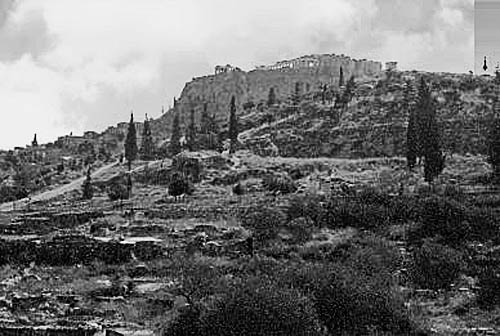
1966 A corner of the Temple: Acropolis.
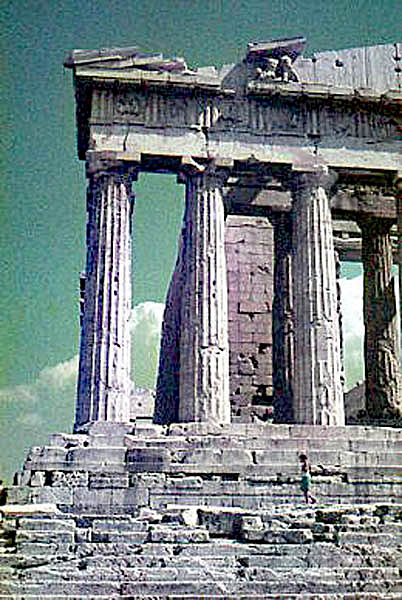
1966 Greek Corinthian helmet, Bronze warrior owl decoration helmet.
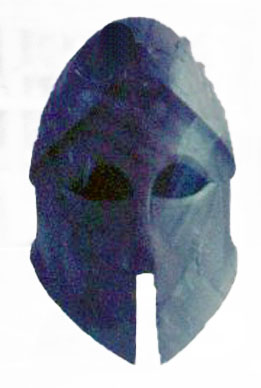
1964 City of Delphi.
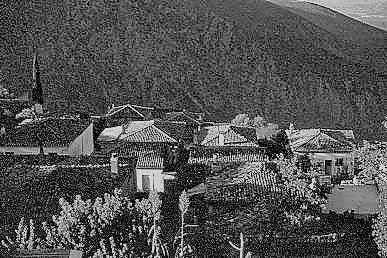
1964 Delphi The Tholos.
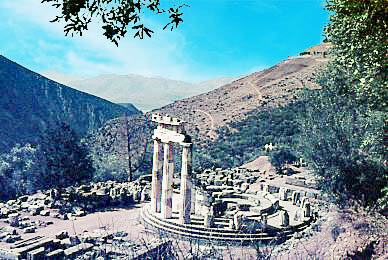
1964 Antoniaus, Cupbearer for Hadrian.
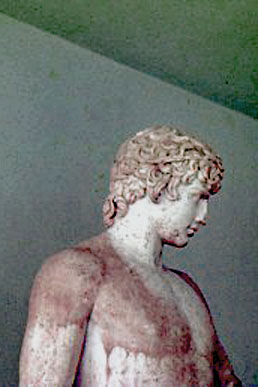
1964 Delphi Temple of Apollo.
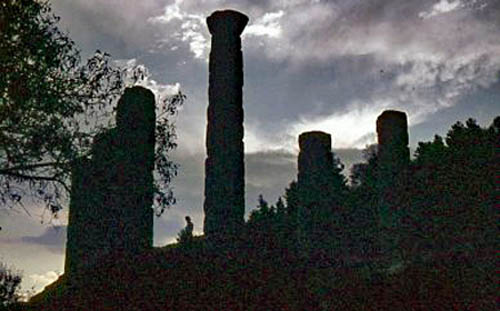
1966 The Corinth Canal.
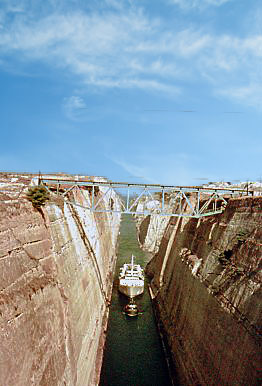
1966 The Meteora Area.
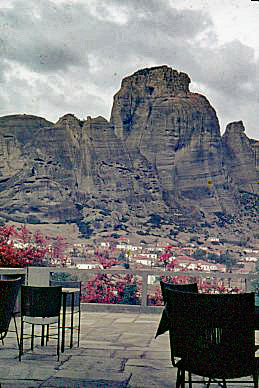
1966 Sounion The Poseidon Temple at dusk.
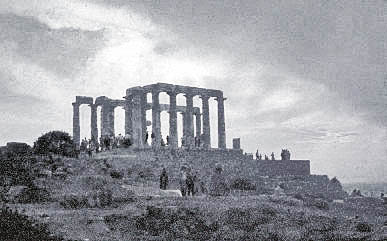
Oct 30, 2022 18:15:32 #
Oct 30, 2022 18:53:12 #
If you want to reply, then register here. Registration is free and your account is created instantly, so you can post right away.

